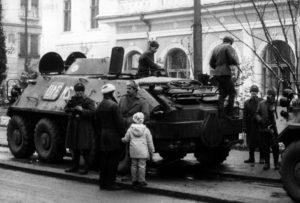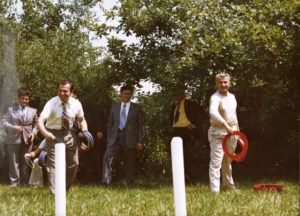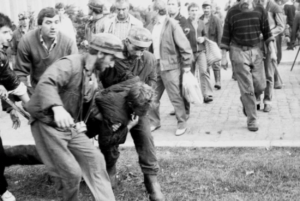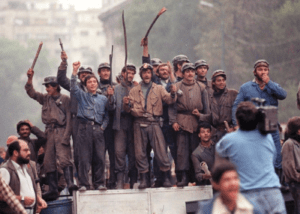
Thirty Years On
School children the world over returned from their Christmas break 1989/1990 with a new and difficult name to pronounce – Ceaușescu. The Romanian communist and his wife had been ousted and executed in the only violent revolution in the democratizing Eastern Bloc.

A new political party had been organized to lead Romania in the interim, as democratic elections were planned and executed. Led by another former communist, Ion Iliescu, the National Salvation Front (in Romanian the FSN) was not only taking care of Romanian business, but it was the favorite to win the upcoming elections, and the Romanian intelligentsia found this entire situation to be quite concerning.
The biggest concern was that, along with the party’s leader, the NSF was chock-full of candidates who had been powerful communists in the previous government. Iliescu himself had vacationed with the now-deceased dictator and his family.

The protestors, who began occupying Bucharest’s University Square in April 1990, demanded that those who had been officials under the communist regime should be barred from serving in the government of the new and democratic Romania.
Iliescu, not one to let an opportunity to stay in power pass by because of a few bleating intellectuals, roundly denounced the protestors. In a move straight out of the Communist Era playbook, Iliescu called the protestors “golani” – rascals – and even implied that they were being manipulated by fascist groups who wished to take over the government themselves.
The first post-Ceaușescu elections were held on 20 May 1990, and as expected the FSN won in a landslide. Most of the protestors packed up and went home after the results were announced.
But not all of them.
Less than 100 protestors remained in tents, camped in University Square, trying to bring attention to the continuation of rule by the most powerful of the Romanian Communists under a new name.
By 13 June Iliescu had had enough. He ordered the police in to tear apart the protestor’s camp and make an end of it.
The removal did not go as planned.

The protestors fought back and were joined by others. High positions in university buildings were occupied, and protestors rained down bricks and molotov cocktails on police forces. Government buildings, such as the police headquarters and the television station came under attack.
Iliescu publicly asked Romania’s citizens to come and save the “democratic regime” from the troublemakers who were attempting to thwart the democratic process.
In the Jiu Valley, the miners responded. With makeshift weapons, they headed to Bucharest via train to save the government.

The miners were welcomed with food by the army, and Iliescu himself gave a speech to them, calling the demonstrators alcoholics, drug addicts, fascists, and bandits. They were then let loose on the protesting crowds. And, more hidden, they were allowed to rampage amongst the Roma community as well.
When the smoke cleared, the official tolls gave six dead and 746 wounded in the protests. But this number is deceptive – opposition news agencies were silenced during this period, and have later reported at least two sites with mass graves from the riots, holding more than 200 bodies.
“There are documents, testimonies of doctors, of people from Domnesti and Straulesti cemeteries. Although we have said all along the real number of dead is over 100.” Viorel Ene, President of the Association of Victims of the Mineriads
The miners involved also claimed that the government had deceived them and included agents-provocateurs in their ranks, and those agents were the ones operating with the most violence. Later investigations have found evidence that this was the case, particularly in instances where opposition groups were violently targeted.
The Mineriad was the most violent manifestation of a societal hatred of intellectuals, but it wasn’t the only instance. The armed working class supporters of the FSN adopted the slogan, “We are workers, not thinkers,” and attacks on people wearing glasses, beards, bright clothing, or long hair increased. An exodus of Romanian intellectuals began to flood out of the nation.
Nor are the after-effects of the Mineriad done rippling. Court cases have been bouncing around the Romanian courts for nearly thirty years, and in 2019 former president Ion Iliescu was charged with Crimes Against Humanity in Romania, but the charges are not expected to go anywhere.
Thirty years on, there is still no resolution. There is very little healing. And as has been seen in subsequent years, reaction to protests in a democratic Romania don’t look all that different from the reactions under communism.
- June 13, 2020
- History , Interesting
